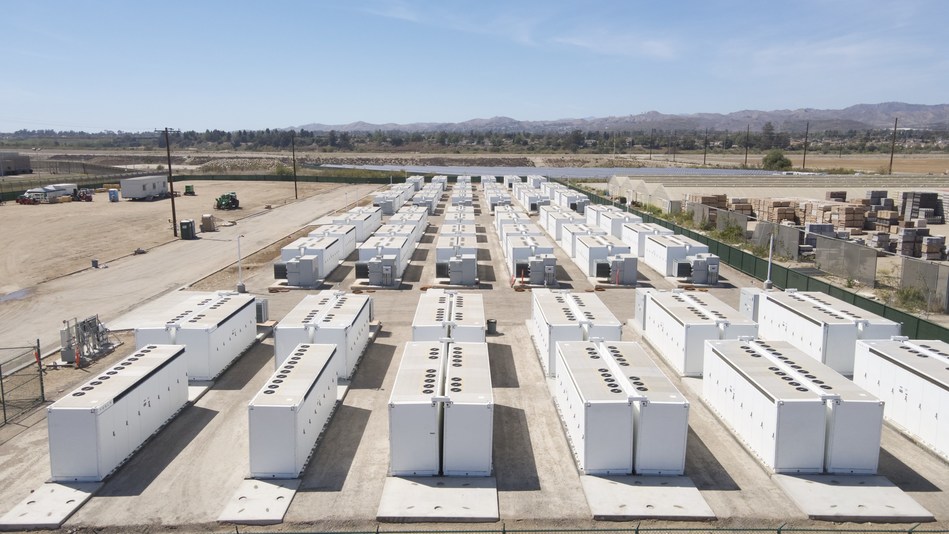Not long ago, the role of an energy storage system could be summed up in a single line: charge when electricity was cheap, discharge when it was expensive. Simple. Direct. That “buy low, sell high” principle carried the industry through its early years. It made the technology easy to explain to investors, straightforward to model, and, for a while, reliably profitable. Those first projects did more than keep the lights on they proved energy storage could work at scale and opened the door to much bigger ambitions.
But the industry has grown up, and the simplicity of that model no longer matches reality. Competition has sharpened. Margins have thinned. Each new project is examined from every angle before a single shovel hits the ground. Investors, who once embraced a single revenue stream, now expect diversity multiple income sources that can weather market shifts. And all of this is playing out under increasingly complex regulatory frameworks that add both cost and risk.
In this environment, the concept of value stacking has moved from an interesting idea to a core survival strategy. The approach is simple in theory: make a single battery asset earn money in as many ways as possible. In practice, it’s more like playing a multi-level game, where success depends on understanding markets, regulations, technology, and timing. The modern storage project doesn’t just charge and discharge. It may provide frequency regulation in one hour, hold capacity for a future commitment the next, and later deliver energy into the market when prices spike.
This shift has changed how projects are designed. Where earlier storage systems resembled conventional power plants with a single function, today’s assets are built for adaptability. Advanced control systems and energy management platforms track market conditions minute by minute, deciding in real time where the battery’s capacity can earn the most. That flexibility has become one of the industry’s strongest competitive advantages.
Ancillary services the quiet but critical functions that keep electricity stable have taken on a much larger role in project economics. While energy transactions are about price, ancillary services focus on reliability: holding frequency steady, managing voltage, and balancing the grid during sudden shifts in demand or supply. Batteries excel here, able to respond in milliseconds where traditional plants need minutes.
The specifics vary by market. In ERCOT (Texas), services like Responsive Reserve Service and the newer ERCOT Contingency Reserve Service reward availability as well as performance, creating consistent income streams even in periods of flat energy prices. In CAISO (California), storage can participate in four distinct ancillary markets – Regulation Up, Regulation Down, Spinning Reserve, and Non-Spinning Reserve and for some projects, these can represent a major share of annual revenue.
Capacity markets layer in another opportunity. Instead of being paid only for delivered energy, assets are compensated for being ready to deliver when needed. This looks very different depending on location. ERCOT has no formal capacity market, so revenue there leans heavily on energy and ancillary services. CAISO, by contrast, operates under a Resource Adequacy framework that requires utilities to secure enough capacity to meet projected peak demand. Four-hour battery systems fit neatly into this requirement, and securing RA contracts can help stabilize a project’s finances well before it comes online.
Not all value stacking happens in wholesale markets. Behind-the-meter projects, where storage is installed on-site for commercial or industrial customers, are becoming increasingly common. These systems can reduce costly demand charges by shaving short-term peaks in electricity use. When not actively serving the host facility, the same batteries can participate in grid programs, making the most of their available capacity. It’s a model that benefits both the customer through cost savings and the project operator, through a steady, diversified revenue stream.
Technology alone doesn’t guarantee these opportunities will be realized. The rules of the market and the willingness of regulators to adapt them determine which services are allowed and how they’re paid. That is why developer engagement with policymakers, utilities, and grid operators is no longer optional. Without active advocacy, the capabilities of modern storage risk being undervalued or excluded entirely from certain revenue streams. Updating and refining these rules is as much about unlocking fair returns as it is about making the grid stronger and more resilient.
The first phase of the storage industry was about proving it could deliver on its technical promise. That chapter has closed. The next will be written by those who can build business models as innovative as the technology itself projects that pull income from multiple markets, adapt quickly to changing conditions, and make full use of real-time control systems to find value wherever it appears.
Energy storage is no longer a single-purpose tool. It has become a multi-role asset, capable of serving the grid, the market, and the customer in different ways sometimes all in the same day. Those who master every aspect of that versatility will shape the industry’s future.
 Arun Muthukrishnan is a PMP-certified energy storage and renewable energy leader with nearly a decade of experience developing and delivering over 800 MW of battery energy storage projects alongside 1.2 GW of solar capacity across CAISO, ERCOT, and other U.S. markets. In senior roles at Arevon, Tesla, Recurrent Energy, and SunPower, he has driven projects from early-stage development through commissioning—managing site origination, land acquisition, and easement negotiations; securing complex federal, state, and local permits; and navigating interconnection processes across multiple ISOs. Arun excels in structuring and negotiating EPC contracts, equipment procurement agreements, and PPAs, as well as building detailed financial models to optimize IRR and portfolio value. With a Master’s in Engineering Management, he is recognized for creating bankable, construction-ready energy storage assets that meet aggressive cost, schedule, and performance goals while supporting the transition to a resilient, decarbonized grid.
Arun Muthukrishnan is a PMP-certified energy storage and renewable energy leader with nearly a decade of experience developing and delivering over 800 MW of battery energy storage projects alongside 1.2 GW of solar capacity across CAISO, ERCOT, and other U.S. markets. In senior roles at Arevon, Tesla, Recurrent Energy, and SunPower, he has driven projects from early-stage development through commissioning—managing site origination, land acquisition, and easement negotiations; securing complex federal, state, and local permits; and navigating interconnection processes across multiple ISOs. Arun excels in structuring and negotiating EPC contracts, equipment procurement agreements, and PPAs, as well as building detailed financial models to optimize IRR and portfolio value. With a Master’s in Engineering Management, he is recognized for creating bankable, construction-ready energy storage assets that meet aggressive cost, schedule, and performance goals while supporting the transition to a resilient, decarbonized grid.
The views and opinions expressed in this article are the author’s own, and do not necessarily reflect those held by pv magazine.
This content is protected by copyright and may not be reused. If you want to cooperate with us and would like to reuse some of our content, please contact: editors@pv-magazine.com.








By submitting this form you agree to pv magazine using your data for the purposes of publishing your comment.
Your personal data will only be disclosed or otherwise transmitted to third parties for the purposes of spam filtering or if this is necessary for technical maintenance of the website. Any other transfer to third parties will not take place unless this is justified on the basis of applicable data protection regulations or if pv magazine is legally obliged to do so.
You may revoke this consent at any time with effect for the future, in which case your personal data will be deleted immediately. Otherwise, your data will be deleted if pv magazine has processed your request or the purpose of data storage is fulfilled.
Further information on data privacy can be found in our Data Protection Policy.